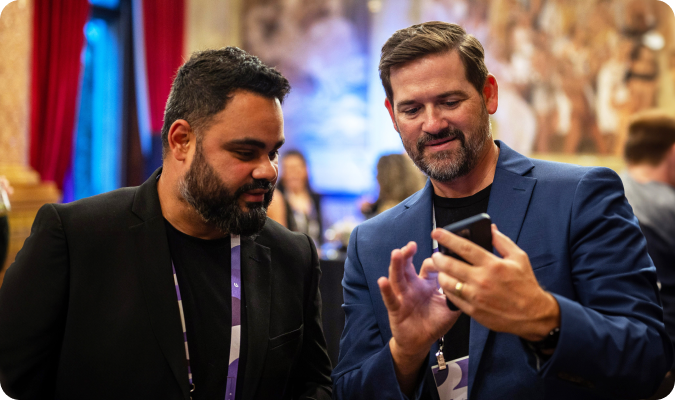
It’s been a really tough two plus years for the events industry. We all know of the devastating impact to the global meetings industry with the global pandemic – no need to rehash the numbers except to recognize how many of our fellow event planners event planners and organizations are no longer in the business and how so many of us had to rethink their approach and delivery of events for our clients.
What really demonstrate the resiliency and energy of our event planners was how we refocused, regrouped, and rethought our business models.
Yes, many planners invested and moved into virtual events. It was a matter of necessity, sure, but it went beyond the need to stay in business. It was a collective approach to protecting OUR business as well as the businesses and livelihoods of so many of our clients’ businesses.
And it got the job done.
Many event management platforms transformed themselves to support virtual events – some faster than others, sure, and with varying levels of performance and vision. But it was an effort that many jumped into with their full energy of resources and focus.
But, the recovery, the move back to live events was a bumpy road for many.
In the past 18 months or so, the move back to live events has seen many successes, and sadly, some failures. With the CDC announcing in early August the relaxing of many masking and isolation rules, the energy for attendees and event planners to move back to live events is on an upswing.
The return to live events will be an interesting one, with varying percentages of attendees still working from home and expressing concern about the safety of face-to-face meetings.
According to a recent MPI Meetings Outlook Survey, only 10 percent of respondents feel their business is back to pre-pandemic levels. There was optimism for 2023 and beyond, but overall expectations still represent less than 50 percent of all respondents feeling a return to pre-pandemic live meeting levels is in their immediate future.
Add to this the cost-of-living crisis we are all experiencing as well as well-documented challenges in staffing our live events, there is added pressure for event planners and attendees to consider for both the health and financial aspects of traveling to meetings, paying for housing and risking possible exposure to health challenges.
So, what are event planners doing to plan for their future business?
It is important to note that many events are still virtual in nature, and many event planners are struggling with the technology of hybrid events.
For some, the terms “Virtual” and “Hybrid” have become a little toxic, or at least, viewed with some concern about cost, technology, and management of these event formats.
According to one software company’s Executive Director of Product Innovation Trevor Gardiner, it is important to face the reality of our new tomorrow but to rethink how we approach the challenges of growing our businesses in the coming months and years.
As a key visionary and lecturer in the global events industry for over 30 years, Trevor has led the successful team at EventsAir through many changes and challenges that have faced the events industry.
“Many event planners and organizations I speak with are concerned about how virtual and hybrid events impact budgets and attendee participation. These terms have picked up some negative connotations and it is important to think about how we talk about events and meetings that may still need to be virtual or hybrid.”
Trevor Gardiner, Founder of Centium Software
“A growing number of event planners are finding it useful to not think in terms of Live, Virtual or Hybrid, but instead, think about meetings that are fluid and flexible in their production,” Mr. Gardiner noted.
“Meetings don’t need to be pigeon-holed either,” Mr. Gardiner said. “I am finding that when event planners think about their events, creating a strategy to build the best event for their clients can easily adopt to changing conditions for health, travel and attendee response. It is empowering to start with a live event for example, but if registrations aren’t meeting projections or if health or financial concerns are preventing travel to simply add Remote Attendance as an option without needing to rebuild or reinvent their event design.”
Mr. Gardiner noted that if you use a robust event platform, there is no need to bring in new software, but to add in the remote attendance tools instead simply you may need.
Many event planners choose to work with outside agencies specializing in virtual and hybrid events, but there are many more planners discovering the tools and functionality needed to with work remote presenters and attendees are quite accessible and easy to use.
Every event organization will need to think about their strategies for marketing and growing their businesses.
In the end, it’s not black and white, but rather an evolving and changing landscape. But it will be quite some time, if ever, before health concerns, world-wide inflation and business operations return to pre-pandemic levels, so it’s useful and quite important to think about your future event strategies today.
About the Author
Alec Sonenthal hails from Austin, Texas and more recently Las Vegas, NV. Since 1994, Alec has been working with EventsAir in many roles including client engagement, training, product development and consulting.
As EventsAir’s Global Director of Education, Alec leads the company-wide programs for client education, including educational webinars, online learning, user conference programming and online knowledgebases.
With more than 25 years’ experience running conferences and meetings, Alec has been involved in meetings technology even before the Internet became a “thing!”
When he isn’t busy working with clients, recording and writing white papers, Alec likes to relax with photography, playing the ukulele (poorly), flying radio control airplanes and occasionally binge watching something awesome on Netflix!
If you’re curious how EventsAir can help you with your event, reach out to one of our team members to guide you through the process.
Event Planning & Management
See EventsAir in action
Discover why 12,000+ event professionals trust EventsAir to deliver effortless events, every time.




